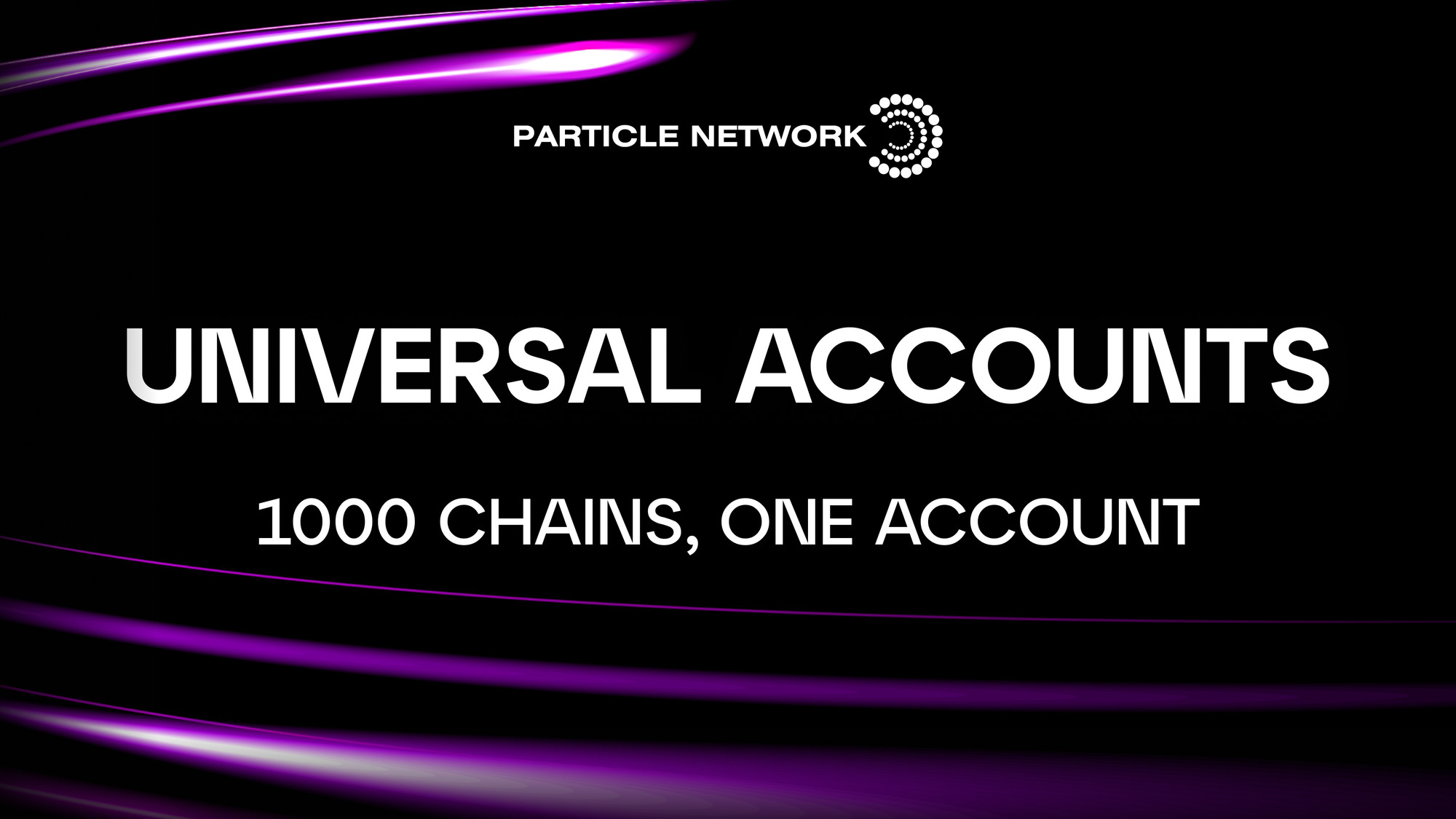One Account, 1000 Chains: Showcasing Universal Accounts

Table of Contents:
Your Web3 experience might be about to change forever.
A few months ago, we announced that we’d embarked on our most ambitious quest yet, aiming to solve Web3’s fragmentation of users and liquidity. Through our cornerstone solution, Universal Accounts (UAs), we’re providing an all-encompassing tool that allows you to manage and use your assets across all chains from a single interaction point. Universal Accounts also allow you to interact with dApps on any chain—all while making it easy for developers to deploy dApps that span multiple chains.
And, as you may know, Universal Accounts aren’t just conceptual: they’re already live and fully usable on Testnet, accessible through Particle Pioneer. In this first version, users can pay gas for any transaction with any token, send transactions across chains without the need for bridges, and freely use their tokens to interact with dApps on external chains.
Sounds interesting? If so, here are a few reasons why you will likely love having one to call yours.
Reason #1: Universal Accounts are easy to create and access
UAs provide users with a single address, balance, and unified interface for interacting with multiple chains.
To create a UA in just a couple of clicks, a user can connect an existing Web3 wallet or social account. From that point on, this account (which can be a Web2 one or a Web3 wallet) will be the single access point to their UA within any interface.
On Mainnet, there will be two types of interfaces for users to access their Universal Accounts:
- Through a standalone interface, similar to what happens now with Particle Wallets via wallet.particle.network.
- Embedded within a dApp integrating UAs. This is similar to how Universal Accounts can be accessed currently via the Particle Pioneer platform.

Reason #2: A single balance for all chains
Universal Accounts offers a single interface to inspect, control, and leverage your balances on many supported networks, both EVM and non-EVM.

UAs allow you allow you to visualize and use your assets from multiple chains as a single balance. This means that, regardless of the chain(s) hosting your assets, they will be effectively pooled together, usable for any transaction you wish to execute on any chain.
The video below shows an example of this in practice. In it, a user initiates the process of paying for an NFT. After this, they can select any combination of tokens available for payment. Particle then routes assets across chains to guarantee the cheapest possible execution, automatically executing any swaps that might be needed along the way.
Reason #3: Seamless cross-chain transactions
Universal Accounts make the experience of performing cross-chain transactions or using dApps on different chains as simple as operating within a single chain. They are a combination of the most impactful UX breakthroughs taking shape in Web3 today: Wallet Abstraction, Account Abstraction, and Chain Abstraction.
As such, users of UAs can send tokens from one chain to another through a Universal Account without manual interactions, bridging, etc. To do so, users only need to:
- Select the assets they want to send and their destination chain.
- Enter the destination address.
- Optionally, select where to draw the asset from and how to pay gas fees.
- Confirm the transaction.
This is shown in the video below:
How does this work? Details for nerds
Universal Accounts are made possible by Particle Network’s Universal Liquidity. This technology aggregates users’ balances across all chains and executes atomic cross-chain transactions and swaps to fulfill users’ goals as needed, coordinated by the Particle Network L1.
When a user performs an atomic cross-chain transaction, their UA interacts with native decentralized exchanges to swap the necessary amount of their existing tokens for an intermediary token accepted by Liquidity Providers (LPs), e.g. $USDT. The decentralized network of LPs atomically receives these assets on their source chains, deducts a small fee, and then releases the equivalent amount of the necessary assets at the destination chain.
This is more easily understood through the below diagram:

Reason #4: Two words. Universal Gas.
Using a Universal Account, there is no need to hold a specific gas token on each chain. You can pay for transactions anywhere and cover fees with any token located on any chain.
It’s as simple as that. You can see UG’s interface below:

How does this work? Details for nerds
Universal Gas leverages Universal Liquidity and is implemented through an Omnichain Paymaster. Particle Network's native token, $PARTI, acts as a crucial exchange medium within this system, ultimately settling all gas fees in this token.
Mechanically, users pay the Paymaster in the token of their choice for the equivalent value of $PARTI consumed within their UserOperations. As shown in the diagram below, Bundler nodes are responsible for sending transactions to their target chains for execution and are paid in $PARTI, allowing users to pay with any token.
All gas payments are eventually settled in the source and target chains, with a portion of the fee automatically routed and converted into $PARTI to settle the transaction on Particle Network. As a result, end-users can pay transaction fees without the cognitive requirements of bridging, keeping track of cross-chain balances, maintaining a pool of native tokens, etc.

Try out Universal Accounts!
As mentioned in the introduction, UAs are currently live on Testnet and accessible through Particle Pioneer. By trying them, you can also qualify for future opportunities both from Particle Network and our partners through The People’s Launchpad.
More than anything, we’d be thrilled if you got a feel for the Universal Account experience. We’re thoroughly convinced that Web3’s future is chain abstracted and that the era of manually moving assets across different chains –as opposed to interacting with Web3 as a whole– is nearly over.
Enjoy testing, and of course, feel free to let us know what you think of Universal Accounts through our social links below!
Particle Network's Chain Abstraction solutions are 100% free for developers and teams. By integrating them, you can set your project in a path to leveraging chain abstraction.
About Particle Network

Particle Network powers chain abstraction, addressing Web3's fragmentation of users and liquidity. This is enabled by Particle's Universal Accounts, which give users a unified account and balance across all chains.
Share this article
About the author(s)


